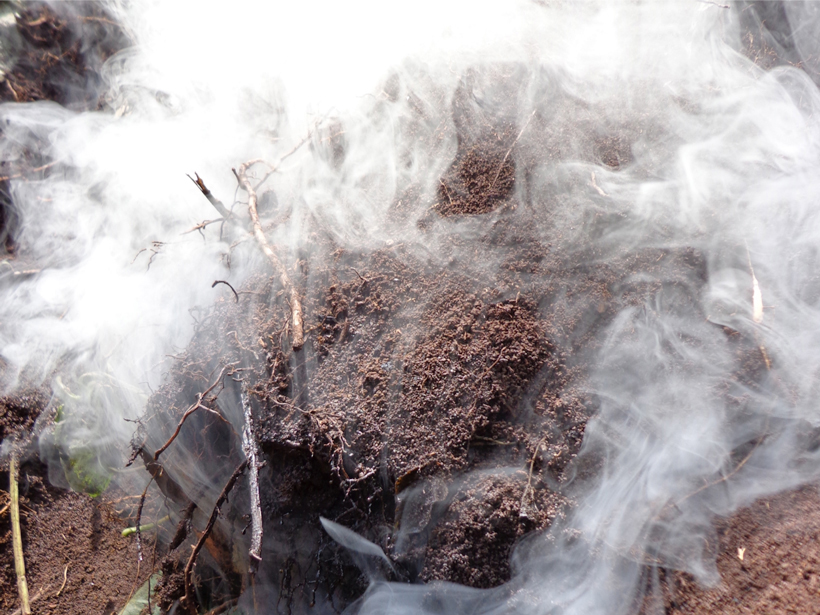Source: Global Biogeochemical Cycles
Pyrogenic carbon—also known as black carbon—is charred carbon deposited by vegetation and grassland fires. In the agricultural community, the pyrogenic carbon–rich biochar is known as a soil enhancer, improving soil fertility and boosting the land’s carbon storage. Despite the fact that it is a common component of the global biogeochemical carbon cycle, little is known about what happens to pyrogenic carbon after it is deposited. Relatively low concentrations suggest that it must be disappearing from the soil, yet the pathway by which this carbon is transported out of the soil has remained somewhat of a mystery.
In a recent study, Güereña et al. sought to uncover the pathways by which pyrogenic carbon is removed from soil at the headwaters of the White Nile watershed of Lake Victoria in East Africa, where forest has been converted to farmland. The team expected to identify erosion as the primary transporter of pyrogenic carbon and to find pyrogenic carbon eroding away faster than nonpyrogenic carbon—but their results were a bit of a surprise.
Over the course of a year, the team sampled soil and water from different land gradient angles in catchments—natural areas where water accumulates—at all major tributaries of the White Nile watershed and measured concentrations of organic carbon and pyrogenic carbon.
They found that pyrogenic carbon was not transported by erosion and surface water flow more than nonpyrogenic carbon—suggesting that the charred carbon deposited by forest fires is no more susceptible to erosion than the organic carbon already stored in the soil. However, the researchers found that concentrations of pyrogenic carbon increased with soil depth. Since the concentration of pyrogenic carbon in underground base flow water corresponded to these higher concentrations below the surface, they concluded that the trick to pyrogenic carbon’s vanishing act lies in transportation processes happening deep in the soil, rather than on the surface. (Global Biogeochemical Cycles, doi:10.1002/2015GB005095, 2015)
—Shannon Kelleher, Writer Intern
Citation: Kelleher, S. (2016), Soil loses pyrogenic carbon by an unexpected pathway, Eos, 97, doi:10.1029/2016EO046995. Published on 1 March 2016.
Text © 2016. The authors. CC BY-NC 3.0
Except where otherwise noted, images are subject to copyright. Any reuse without express permission from the copyright owner is prohibited.

